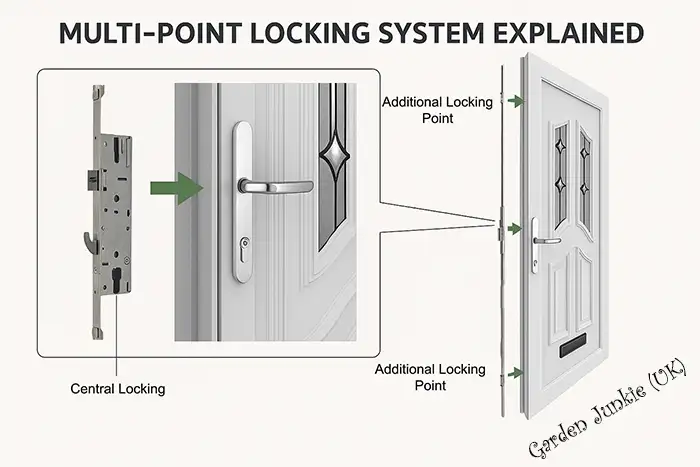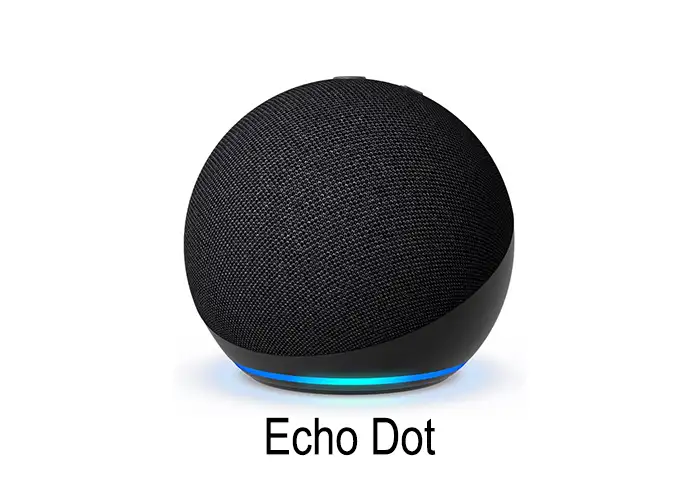Beautiful Plants For Your Interior
Smart Locks for UK Multi-Point Doors: Complete Guide & Installation Advice

Smart locks are revolutionising home security in the UK, offering keyless entry, remote control, and the ability to integrate with smart home systems. However, homeowners wanting Smart Locks for UK Multi-Point Doors, which are common in modern composite and uPVC doors, face unique challenges when considering a smart lock upgrade. These advanced locking mechanisms differ significantly from standard single-point locks, and not every smart lock is compatible out of the box.
This comprehensive post explores everything UK homeowners need to know about choosing and installing smart locks for multi-point doors. We will cover how these systems work, the best smart lock models available, practical installation considerations, and critical security and insurance insights.
Multi-point locking systems are fitted to most modern front and back doors in the UK. These locks are built into the door and engage multiple locking points, typically at the top, middle, and bottom of the door frame, simultaneously. When the door handle is lifted, internal rods or hooks slide into the frame, securing the door more effectively than a single deadbolt would.
This system provides enhanced resistance against forced entry, improves insulation, and reduces door warping. It’s a preferred option for homes seeking additional peace of mind. However, the key distinction from other systems is that the locking mechanism is manually activated by lifting the handle, a crucial detail when considering smart lock compatibility.

Smart Locks for UK Multi-Point Doors: A Multi-Point Locking System
Why Compatibility with Multi-Point Doors Is a Challenge
Most smart locks available on the market are designed for the North American market, where deadbolts and single-latch systems are the norm. These locks do not typically account for the need to manually engage multiple locking points through handle lifting. As a result, many smart locks cannot fully secure a UK door fitted with a multi-point system unless a specific action is taken by the user.
For example, if a homeowner installs a smart lock designed only to turn the cylinder, it may only secure the latch but leave the top and bottom locking bolts unengaged. This could compromise security and potentially invalidate home insurance policies.
What Makes a Smart Lock Suitable for UK Multi-Point Doors?
A smart lock that works effectively with a UK multi-point locking door must either:
- Be used in conjunction with manual handle lifting (typically via a retrofit motor that turns the lock once bolts are engaged).
- Be part of a complete replacement handle set that includes a motor capable of locking once the handle has been physically lifted.
- Work alongside an automatic gearbox mechanism (though these are rare and often expensive).
It’s also important that the smart lock uses a Euro cylinder, which is the most common locking cylinder in the UK, and can integrate with multi-point gearbox systems.
Recommended Smart Locks for Multi-Point Doors in the UK
Ultion Nuki Smart Lock Kit
The Ultion Nuki system is a popular retrofit solution for UK homes. It combines the Nuki Smart Lock with Ultion’s 3-star security-rated Euro cylinder, creating a system that can be installed over an existing key lock on the inside of the door. This setup allows the user to retain their current door hardware while gaining app-based control over locking and unlocking functions.
However, it’s worth noting that users must still manually lift the handle to engage the multipoint bolts before locking via the app. The system then rotates the internal lock mechanism to fully secure the door.
The Nuki app supports automation, scheduling, guest access control, and integrations with Apple HomeKit, Alexa, and Google Assistant. For many homeowners, this hybrid setup provides the perfect blend of smart control and mechanical reliability.
Yale Conexis L2
Yale’s Conexis L2 is designed specifically with UK doors in mind. It replaces both the handle and the lock mechanism entirely, offering a clean and integrated solution. Once the user lifts the handle, the lock motor engages to secure all points on the door.
The Conexis L2 offers features such as key cards, smartphone unlocking, one-time codes for visitors, and remote access through Yale’s app. It integrates well with Z-Wave smart home systems, and Yale’s long-standing presence in the UK makes this model a trusted choice for homeowners seeking peace of mind.
While the L2 still requires physical handle lifting, its smart locking motor provides a secure and user-friendly way to automate door security.
SmartLock Slimline Universal
This Slimline smart lock claims to remotely engage the door catch, providing a form of electronic locking without lifting the handle. However, in practice, it only retracts the latch, not the bolts. As a result, it is not a full locking solution for multi-point systems and may leave your home less secure than intended if relied upon alone.
That said, it is useful for internal doors, secondary entrances, or in situations where the homeowner still lifts the handle manually before using the smart function.
Smart locks for UK multi-point Doors: Slimline Universal Installation
How to Measure Compatibility Before Buying
Before purchasing a smart lock, it is critical to measure the door and lock setup to ensure compatibility. Key measurements include:
- Backset: The distance from the door edge to the centre of the lock cylinder.
- Centre-to-centre spacing: The vertical distance between the cylinder and handle spindle.
- Door thickness: Most locks accommodate doors between 44mm and 70mm, but this should be confirmed.
- Type of multi-point gearbox: Brands like ERA, Winkhaus, and GU manufacture different gearbox systems that may vary in compatibility.
Homeowners are strongly encouraged to consult with a locksmith or smart lock specialist to ensure their door system will support the smart lock they intend to purchase.
DIY vs. Professional Installation
Some smart locks, particularly retrofit options, can be installed by a confident DIYer with basic tools. Nuki and Ultion kits are designed with this in mind. However, handle replacements and systems integrated into the door’s locking mechanism may require more advanced knowledge.
In such cases, professional installation is highly recommended. Not only does this ensure the lock is correctly aligned and functioning, but it also helps validate the manufacturer’s warranty and may be a condition of some insurance policies.
Professional installers can also check that the door’s locking system complies with UK fire and building regulations, particularly important in HMOs or rental properties.
Key Security Features to Look For
When choosing a smart lock, UK homeowners should prioritise the following features to ensure the highest level of security:
- Encrypted wireless communication to prevent interception or spoofing of access signals.
- Mechanical override key access in the event of power failure or app malfunction.
- Two-factor authentication for app-based control, ideally including biometrics.
- Tamper detection alerts and activity logs are available through the app.
- BSI IoT Kitemark or Sold Secure accreditation, which ensures compliance with UK standards.
These features not only protect your home but also demonstrate to insurers that the system meets the minimum criteria for smart security systems.
Power, Battery Life, and Emergency Access
Most smart locks are battery-powered. The battery life typically ranges from 6 to 12 months, depending on usage frequency, wireless protocol (Wi-Fi vs Bluetooth), and weather exposure.
Smart locks often alert users when the battery is running low, but best practice is to check monthly via the app. Some systems offer external battery terminals or emergency USB-C ports to temporarily power the lock in case of battery failure. Others include a physical key override system for backup entry.
It is advisable to keep spare batteries on hand, especially if the door is your main entrance.
Integration with Smart Home Ecosystems
Smart locks that support integrations with platforms like Apple HomeKit, Amazon Alexa, Google Assistant, and SmartThings allow for seamless automation. For example, doors can lock automatically at night, unlock when your phone detects you are arriving home, or notify you if left open.

Smart locks for UK multi-point Doors: Smart Locks can be controlled via the Echo Dot Speaker and Alexa’s cloud-based voice Service.
However, deeper integration often results in faster battery drain and may complicate setup for users unfamiliar with smart home platforms. Some brands, like Yale, offer their smart hubs for simplified automation.
Cost Expectations and Warranty Coverage
At the time of writing, prices for smart locks suitable for UK multi-point doors generally start around £250 for basic retrofit kits and climb to £400–£500 for full handle replacements with advanced smart features.
Warranties typically cover hardware for two years and include access to firmware updates. Be sure to register the product upon installation and confirm what is required to maintain warranty validity—some brands require installation by a certified technician.
Compliance with Insurance and Legal Standards
In the UK, many home insurance providers now accept smart locks as long as they:
- Meet TS007 3-star or BS3621 standards.
- Include a manual override such as a key cylinder.
- Are installed by a qualified technician if part of the policy conditions.
In addition, landlords using smart locks in rental homes or HMOs must ensure that:
- The lock permits emergency egress without a key.
- The device does not block access to fire escapes.
- Local authority regulations for building and fire safety are adhered to.
Real-World Example: Smart Lock Installation in a UK Home
A homeowner in Manchester recently upgraded their composite front door to use the Ultion Nuki Smart Lock. The installer confirmed compatibility with their Winkhaus multi-point system and retained the external handle.
The homeowner reported convenience improvements such as app alerts, scheduled locking, and granting temporary access to tradesmen. However, they still manually lift the handle before locking. Despite this step, they considered the setup worthwhile due to the added visibility and control over access.
Final Thoughts – Smart Locks For UK Multi Point Doors
Installing a smart lock on a UK multi-point door requires careful planning and consideration. While the process is not as simple as replacing a deadbolt, modern systems like the Ultion Nuki and Yale Conexis L2 have made smart access both feasible and secure for British homes.
With the right preparation and equipment, homeowners can enjoy the convenience of keyless entry without compromising on mechanical strength or insurance compliance. For best results, always verify compatibility, consider professional installation, and keep firmware updated to ensure optimal performance and protection.
Related posts:
- Smart Locks: The Future of Home Security
- How Safe Are Smart Locks
- Best Smart Locks for Rental Properties
These articles will delve deeper into specific topics related to smart locks.
FAQs
Can a smart lock lift the handle on a multipoint door?
No mainstream smart lock can physically lift the handle. However, mechanical auto-engage mechanisms—such as Yale’s AutoEngage gearbox—can bolt the catch remotely, though full multipoint engagement still requires handle lifting.
Which smart locks work without lifting the handle?
Models like the SmartLock Slimline Universal can retract the latch over the catch remotely, but they do not operate additional bolts. This design is more secure than failing to bolt at all, but it doesn’t fully replace manual handle lifting.
Is Yale Conexis L2 compatible with UK multipoint doors?
Yes, Yale Conexis L2 is specifically designed for UK-style doors. It replaces both the handle and lock and is widely recommended by UK homeowners, though it still requires the handle to be lifted during the locking process.
Can I retrofit a Nuki smart lock onto a multipoint door?
You can retrofit the Nuki or Ultion kit onto your Euro cylinder if your handle is liftable. It won’t automate the lifting process but retains keyless access via Bluetooth or Wi-Fi, making it a popular retrofit option among renters.
